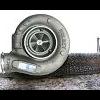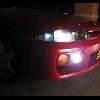I found a good cheap boost controller for $22!!!
Announcements
-
Similar Content
-
Latest Posts
-
Ok thanks 🙂 I will higly consider this. Any "known" company for a good reviews and experience to send that off? Is that CJ-motor good one? Or go straight to GCG site? I need to use VPN to even find some of those "shops" let alone access them 🙂
-
You can literally put in as much WMI as it takes to quench the combustion totally (and then back it off a little, obviously), and it will keep making more and more power. The power comes from the cooling effect of the water (and the meth) and the extra fuel (the meth, which also has massive octane). It is effectively exactly like running E85. One might be slightly better than the other, but they are damn close. But with either you can lean on the boost or the timing (or both) waaaay more than with just petrol and the results are similar. Here's the first thing I googled for an anecdotal bit of evidence. Can't access the attachment without being a gold member, but it is there for the getting if able to, or searched up elsewise perhaps. https://www.hpacademy.com/forum/general-tuning-discussion/show/wmi-vs-e85/
-
Yeah it is wild how much wider the Yokohama A050 in 255/40R17 vs Yokohama AD09 in 255/40R17 sits on the 17x9 +22 considering its even from the same brand and adjacent product family
-
Would love to see some examples of WMI making the same as E85. Only thing I've ever found is this one. Which suggests WMI is not worth much at all.
-








Recommended Posts
Create an account or sign in to comment
You need to be a member in order to leave a comment
Create an account
Sign up for a new account in our community. It's easy!
Register a new accountSign in
Already have an account? Sign in here.
Sign In Now